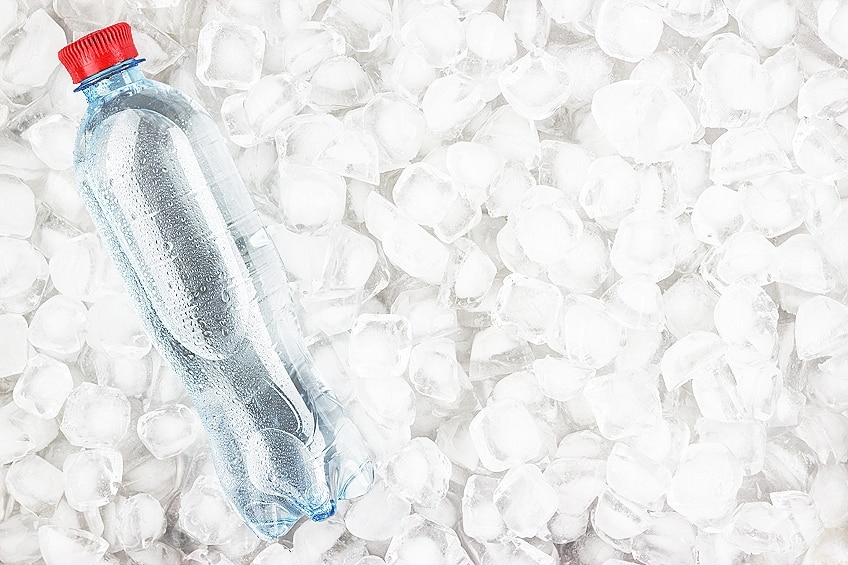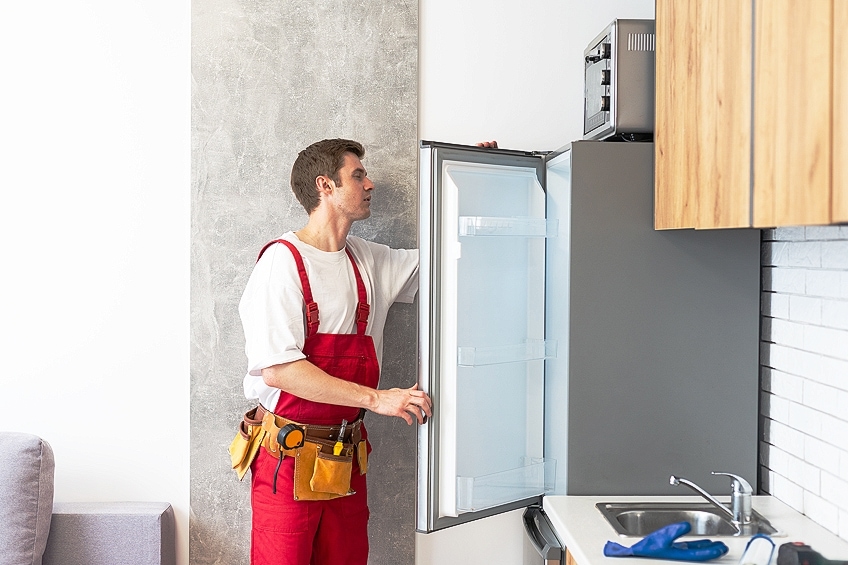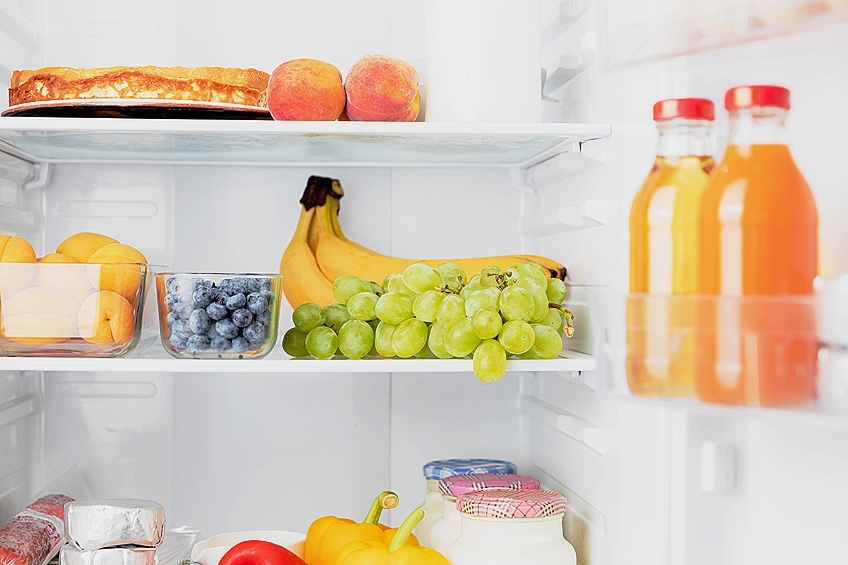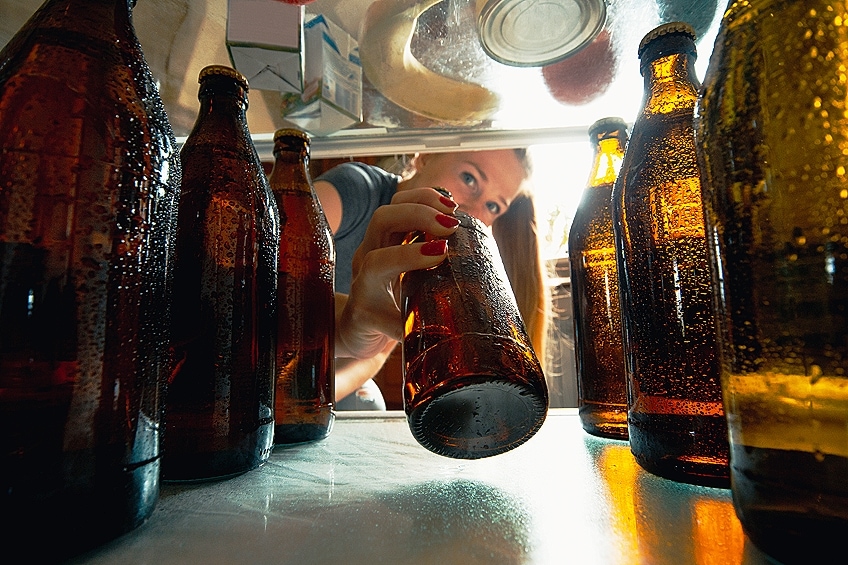How Long Does It Take a Refrigerator to Get Cold – Chill Time
This post may contain affiliate links. We may earn a small commission from purchases made through them, at no additional cost to you.
Chill seekers and fridge aficionados, gather round! Today, we’re embarking on a cool quest to unravel one of the most pressing mysteries of our culinary realms: How long does it truly take for a refrigerator to hit that sweet spot of chilly perfection? Join us as we delve into the frosty depths of appliance science and embark on a journey that’s equal parts informative and refreshingly cool. Get ready to chillax and discover the secrets behind the icy embrace of our trusty refrigerators!
Contents
Key Takeaways
- A new fridge can take between 2 to 24 hours to reach the ideal temperature.
- Several factors, including size and model, affect the refrigerator’s cooling time.
- Knowing when your fridge is cool enough is essential for food safety.

Understanding Refrigerator Cooling Dynamics
When outfitting a kitchen with a new refrigerator, consumers often wonder about the time it takes for the appliance to reach a safe and stable temperature for storing food and beverages. Refrigerators are designed to maintain an ideal temperature to keep food fresh and prevent spoilage.
The recommended safe temperature for a refrigerator to properly preserve food is at or below 40°F (4°C), as advised by food safety authorities.
When a refrigerator is first turned on or has been left open for a period, there are key dynamics at play that affect the time it takes to reach a safe operating temperature. This section will explore the basics of refrigeration, factors influencing cooling time, and methods for determining a specific fridge’s cooling time.
The Basics of Getting Cold
The cooling process in a refrigerator begins with the compressor, which pumps refrigerant through the cooling system. The refrigerant absorbs heat from the fridge’s interior and expels it outside, thus lowering the temperature inside. This process is cyclical and continues until the interior reaches the desired coolness. The time it takes for a refrigerator to cool can vary significantly based on several factors, including the size, model, and starting ambient temperature.

Full-size refrigerators can take from 2 to 24 hours to reach the set temperature, with the average time being around 12 hours. Mini fridges, on the other hand, tend to cool down faster, averaging around 4 hours to reach the desired temperature. Understanding these cooling dynamics is crucial, especially if one needs to store perishable items shortly after installation.
Factors Influencing Cooling Time
Several factors can impact the cooling time of a refrigerator:
- Ambient temperature, as a higher room temperature can slow down the cooling process, extending the time needed for a fridge to cool.
- Fridge size and load, because Larger fridges and those packed with food items often take longer to cool down.
- Ventilation. Proper airflow around the refrigerator ensures efficient operation; inadequate ventilation can lead to longer cooling times.
- Door seals’ integrity.
- Frequency of door openings.
- The initial temperature of items placed inside.
How To Determine Your Fridge’s Cooling Time
To determine the cooling time for your specific refrigerator model, follow these steps: First, consult the manual as manufacturers often provide estimated cooling times. Next, pay attention to the compressor; the longer it runs initially, the longer the cooling time. Additionally, placing a thermometer inside allows you to monitor temperature fluctuations accurately. Keep in mind that cooling times can vary significantly, typically ranging from 2 to 24 hours depending on the refrigerator type and model. By observing these elements, you can better estimate the time required for your fridge to reach optimal chilliness.

Optimizing Your Refrigerator’s Performance
Ensuring a refrigerator operates at peak efficiency requires attention to installation, settings, and maintenance. By addressing these factors, one can enhance cooling efficiency and achieve the desired temperatures promptly.
Proper Installation and Setup
One should install their refrigerator away from heat sources and ensure there is ample space around it for proper air circulation. It’s critical to set the temperature control to the FDA-recommended food-safe temperature of 40°F for the refrigerator and 5°F for the freezer. Seal integrity is also paramount; a tight seal keeps cold air inside and warm air out, allowing the refrigerator to maintain consistent temperatures without overexerting.

For an effective refrigerator installation, follow these key steps: Firstly, ensure there’s sufficient space around the appliance for proper air circulation. Avoid positioning it next to heat-emitting devices. Check that the unit is level to prevent any issues. As for the initial settings, set the refrigerator temperature to 40°F and the freezer temperature to 5°F for optimal performance right from the start.
Maintenance Tips for Efficient Cooling
Maintaining a refrigerator’s efficiency also demands regular upkeep. Clean the coils behind or beneath the refrigerator to ensure optimal air circulation and heat rejection. The temperature should be checked periodically to ensure it’s at the recommended setting, adjusting according to seasonal changes in room temperature. One can speed up the process of cooling by minimizing the opening of the door, as frequent openings lead to loss of cold air and extended recovery times.
For routine maintenance, keep these checks in mind: Firstly, inspect and clean the coils to remove dust and debris buildup.
Ensure the door seal is clean and intact to maintain proper insulation. Regularly monitor the internal temperature to ensure your refrigerator operates efficiently. Helpful usage tips include limiting frequent door openings to help sustain the internal temperature. Organize the contents thoughtfully to promote efficient air circulation within the unit. Allow hot foods to cool to room temperature before placing them in the refrigerator to maintain optimal conditions.
How Do I Know My Refrigerator Is Cool Enough?
Determining whether a refrigerator has reached a safe cooling temperature involves a straightforward process. The target temperature for a refrigerator, as recommended by the FDA, is at or below 40°F (4°C). To ensure a refrigerator is cool enough, one should use an appliance thermometer. This device provides a reliable reading of the internal temperature. For accurate temperature monitoring, place the thermometer in the center of the refrigerator’s central shelf, away from cooling elements, walls, and doors.

After installation, allow at least 20 minutes with the refrigerator door closed for an accurate reading. Regularly check the thermometer, and if the temperature exceeds 40°F, adjust the refrigerator’s settings accordingly for optimal cooling performance. It is crucial for individuals to regularly monitor the refrigerator temperature, as fluctuations can occur due to door openings, the amount of food stored, and environmental factors. It’s advised to occasionally verify the thermometer’s accuracy in ice water, as they can sometimes become miscalibrated.
As we wrap up our icy exploration into the world of refrigerator cooldowns, remember: while the wait for a fridge to get cold may feel longer than a polar bear’s nap, patience pays off in the form of crisp veggies and frosty beverages. Whether you’re a fridge newbie or a seasoned chill master, understanding the nuances of cooling times ensures your culinary adventures stay fresh and flavorful. So, next time you’re anxiously waiting for that satisfying chill, just remember – good things come to those who refrigerate! Stay cool, my friends.
Frequently Asked Questions
What Is the Typical Cooling Time for a New Refrigerator Before It Reaches the Proper Temperature?
A new refrigerator typically takes 4 to 24 hours to cool down to the recommended temperature of 37°F to 40°F. This range can vary based on the refrigerator’s size, initial room temperature, and pre-set temperature.
Can Immediate Usage of a New Fridge Affect Its Cooling Efficiency and Food Safety?
Using a new fridge immediately after installation can affect cooling efficiency as the appliance hasn’t had adequate time to stabilize at the proper temperature, potentially compromising food safety. It’s advisable to wait until the fridge reaches the recommended temperature before storing perishable items.








